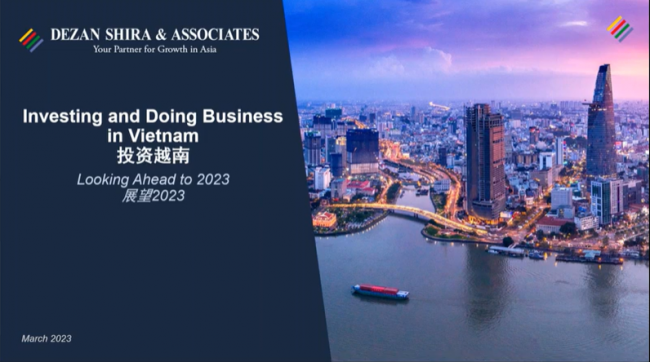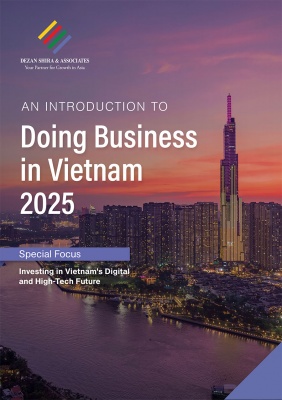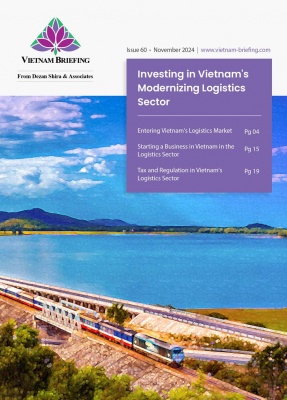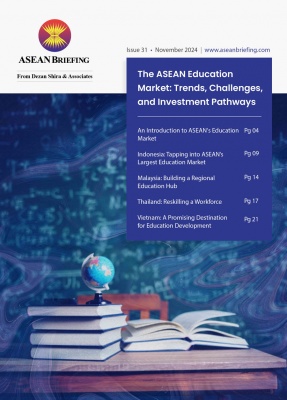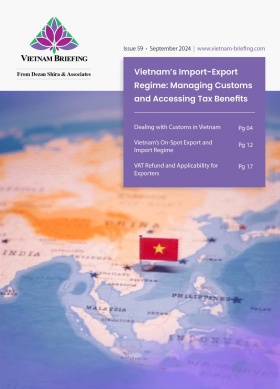Vietnam’s 2025 Job Market: Opportunities and Challenges
Vietnam’s 2025 job market post-Tet is set for dynamic shifts, with increased hiring and job mobility across sectors. We present key market insights from HCMC, Hanoi, and prominent industrial hubs.
The post-Tet period is often regarded as a ‘golden time’ for Vietnamese workers to seek new employment. To address the shortages caused by this wave of resignations, businesses typically open their recruitment for talent searches, thereby offering prospective job seekers a pool of new opportunities.
This year is no different. Experts predict that technology technicians, sales representatives, and manual workers will be the most sought-after roles in 2025, driven by vigorous business growth and digital transformation in the country’s key industrial centers. The technology, renewable energy, and logistics sectors are expected to experience rapid growth in 2025.
Vietnam’s labor market in 2024
The Ministry of Labor, Invalids, and Social Affairs (MOLISA), referencing a report from the General Statistics Office (GSO), noted a strong labor market recovery in the fourth quarter and throughout 2024. This momentum could lay the groundwork for 2025, creating opportunities for significant advancements. Below we present key insights into Vietnam’s labor market in 2024, as reported by the GSO.
Vietnam workforce overview
Vietnam’s labor force in 2024 is approximately 53 million, an increase of 575,400 from the previous year, with a labor participation rate of 68.9 percent.
Education and training: The proportion of the labor force holding training certificates stands at 28.3 percent for 2024, marking a 1.1 percentage point increase.
Employment: The total number of employed individuals reached 51.9 million, reflecting a rise of 585,100 or 1.1 percent compared to the previous year.
Vietnam’s employment distribution in 2024 was as follows:
- Urban areas: 19.9 million, an increase of 831,200.
- Rural areas: 32.0 million, a decrease of 246,100.
Vietnam employment statistics
|
Employment Sector in Vietnam |
Employment (2024) |
Percentage of Total Employment |
|
Agriculture, forestry, and fishing |
13.7 million |
26.5 |
|
Industry and construction |
17.4 million |
33.4 |
|
Services |
20.8 million |
40.1 |
|
Total |
51.9 million |
100 |
Average income in Vietnam
Vietnam’s average monthly employee income was VND 7.7 million (approx. US$302) in 2024, an increase of 8.6 percent from the previous year.
|
Monthly Average Income in Vietnam |
||
|
Income Category |
VND |
US$ |
|
Overall labor income |
7.7 million |
302 |
|
Male labor income |
8.7 million |
341 |
|
Female labor income |
6.5 million |
255 |
|
Urban labor income |
9.3 million |
364 |
|
Rural labor income |
6.7 million |
262 |
Labor demand is high in Vietnam’s major industrial hubs
Ho Chi Minh City
A representative from the Department of Labor, War Invalids, and Social Affairs of Ho Chi Minh City stated that the city’s labor market has shown positive signs following the 2025 Lunar New Year holiday. Recruitment demand is rising across most industries, with around 50,400 – 55,500 job vacancies.
The distribution of human resource demand is as follows:
- Trade and services: 67.57 percent;
- Construction: 31.92 percent; and
- Agriculture, forestry, and fishery: 0.51 percent.
Key industries account for 17.18 percent of the total demand, including:
- Mechanics: 6.12 percent;
- Pharmaceuticals: 5.96 percent;
- Food and food Processing: 2.84 percent; and
- Electronics manufacturing: 2.26 percent.
Recruitment demand is particularly high in sectors such as:
- Garment, leather, and footwear;
- Commercial business;
- Administration, editing and translation;
- Mechanics and automation, including transportation, warehousing, and port services;
- Accounting and auditing; and
- Marketing.
The primary targeted age group is 27 to 35, comprising 48.77 percent, while those under 26 account for 28.77 percent.
Meanwhile, the HCMC Center for Forecasting Manpower Needs and Labor Market Information (FALMI) expects the city to recruit 79,000 to 84,000 workers in the first quarter of 2025.
In terms of expertise, the demand for trained human resources stands at 88.11 percent, distributed as follows:
- Primary-level training: 34.61 percent
- Secondary-level training: 20.14 percent
- University level and above: 18.76 percent
- Associate degree level: 14.6 percent
The demand for unskilled labor is expected to be 11.89 percent.
Hanoi
According to the Hanoi Employment Service Center, businesses in Hanoi are expected to focus on hiring workers in fields related to information technology, renewable energy, the green economy, and digital transformation. Positions such as programmers, data analysts, artificial intelligence specialists, and cybersecurity engineers will continue to drive recruitment demand in the technology sector.
Additionally, manufacturing and logistics companies will target hiring for roles like automation engineers, supply chain managers, and quality management specialists to meet the needs of process optimization while investing in the application of new technologies.
On December 25, 2024, Hanoi issued Plan No. 379/KH-UBND on supporting and developing the city’s labor market in 2025. The plan aims to create 169,000 jobs and reduce the urban unemployment rate to below 3 percent.
In the first quarter of 2025, enterprises are expected to need approximately 100,000 to 120,000 workers. Recruitment trends will vary across industries. Notably, sectors connected to trade and services are projected to see a significant hiring increase of around 20 percent compared to the prior period, primarily due to preparations for the Tet holiday peak. Meanwhile, roduction, processing, manufacturing, electronics, textiles, footwear, and construction industries are expected to see a hiring rise of about 10 to 15 percent, due to increased investment capital disbursement and production expansion.
Other localities
Beyond HCMC and Hanoi, Vietnam’s other industrial hubs have also seen strong labor market activity following Tet.
In Thanh Hoa, the Provincial Employment Service Center reports that 39 large enterprises are actively recruiting, with a demand for approximately 45,000 workers. The textile and footwear industries, in particular, have secured new orders since early 2025, driving a surge in recruitment efforts.
Meanwhile, in Quang Ngai, the Department of Labor, War Invalids, and Social Affairs recently organized a 2025 job fair to connect workers with local businesses. The event attracted 17 enterprises with a collective recruitment demand of 10,000 workers, primarily in garments, electronics, leather footwear, and mechanics.
What to expect from Vietnam’s labor market in 2025
Vietnam’s labor market in 2025 is expected to become increasingly complex, influenced by several key factors. A significant influx of public sector employees is anticipated due to state apparatus streamlining policies. At the same time, global trade fluctuations may impact Vietnamese exports, affecting labor demand.
If production and business activities continue to expand, the labor supply will remain aligned with market needs. However, if growth slows, an oversupply of workers may emerge, making job opportunities more competitive.
A major challenge remains the quality of the labor supply. According to Nguyen Thi Thanh Mai, Deputy Director of the Population and Labor Statistics Department under the General Statistics Office, 71.4 percent of Vietnamese workers are untrained and lack professional certifications, posing a barrier to a sustainable and interconnected labor market.
Experts anticipate major shifts in work arrangements, hiring trends, and skill requirements, driven by technological advancements and digital transformation. To navigate these changes, companies should prioritize building an attractive workplace, fostering talent retention, and investing in workforce development for long-term success.
Talent retention strategies
With the rapid advancement of technology and shifting workforce dynamics, businesses in Vietnam are facing unique challenges in finding candidates with the right skills and meeting the evolving expectations of employees. To foster a resilient workforce in 2025, firms are advised to adopt proactive strategies in talent recruitment and retention, as follows:
- Leveraging multiple sources: Companies should leverage executive search, leadership coaching, and outsourcing to enhance their workforce strategies.
- Encouraging employee feedback: Regularly gathering employee feedback helps employers adapt their talent attraction and retention strategies to align with changing market conditions.
- Compensation and benefits: Competitive compensation packages are crucial for attracting and retaining talent and should be aligned with industry standards.
- Recognition and rewards: Acknowledging employee achievements beyond monetary rewards will foster a motivated and engaged workforce.
- Building positive company culture: Companies should cultivate an inclusive culture that promotes teamwork, collaboration, and flexibility, which is increasingly important for employees.
- Flexible work arrangements: Providing options for remote work and flexible schedules can enhance employee satisfaction and work-life balance.
(US$1 = VND 25,539.98)
About Us
Vietnam Briefing is published by Asia Briefing, a subsidiary of Dezan Shira & Associates. We produce material for foreign investors throughout Asia, including ASEAN, China, and India. For editorial matters, contact us here and for a complimentary subscription to our products, please click here. For assistance with investments into Vietnam, please contact us at vietnam@dezshira.com or visit us at www.dezshira.com.
Dezan Shira & Associates assists foreign investors throughout Asia from offices across the world, including in Hanoi, Ho Chi Minh City, and Da Nang. We also maintain offices or have alliance partners assisting foreign investors in China, Hong Kong SAR, Dubai (UAE), Indonesia, Singapore, Philippines, Malaysia, Thailand, Bangladesh, Italy, Germany, the United States, and Australia.
- Previous Article Industrial Zones in Vietnam: 2025-2030 Growth Outlook
- Next Article 越南2025年环境保护税政策解读





